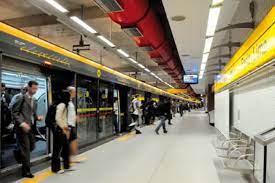
The Role of Access Control in Train Stations
In today’s fast-paced world, the efficient operation of train stations is crucial to ensuring seamless transportation for millions of commuters. One of the key components that contribute to the smooth functioning of these stations is access control. In this article, we will delve into the vital role access control plays in train stations, ensuring security, efficiency, and convenience for both passengers and staff.
Understanding Access Control
Access control refers to the management of entry and exit points in a train station. It involves regulating who can enter specific areas and when, ensuring that only authorized personnel and passengers gain access. Access control systems use a variety of technologies, including smart cards, biometrics, and security cameras, to monitor and manage these access points.
Enhancing Security
Security Measures
One of the primary functions of access control in train stations is to enhance security. Train stations are often crowded, making them potential targets for security threats. Access control systems help deter unauthorized individuals from entering sensitive areas, such as control rooms, maintenance facilities, and restricted platforms.
Surveillance Integration
Modern access control systems also integrate with surveillance technology. This synergy allows for real-time monitoring of passenger flow and the identification of suspicious activities. Security personnel can quickly respond to any security breaches or emergencies, ensuring the safety of passengers.
Streamlining Passenger Flow
Ticketing and Boarding
Access control extends to ticketing and boarding processes. Automated gates equipped with access control technology verify passengers’ tickets and grant access to the platform only to those with valid tickets. This reduces queues and congestion at ticket counters, leading to smoother boarding procedures.
Crowd Management
Access control systems assist in managing crowds during peak hours. By regulating the number of passengers allowed on platforms and in waiting areas, stations can prevent overcrowding and ensure the safety and comfort of commuters.
Employee Management
Staff Access
Access control is not limited to passengers; it also applies to station staff. Different levels of access can be granted to employees based on their roles. For example, maintenance personnel may have access to tracks and equipment areas, while ticketing staff have access to ticket counters.
Attendance Tracking
Access control systems can also track employee attendance and working hours, ensuring accountability and efficiency among station staff.
Ensuring Accessibility
Accessibility for All
While security and efficiency are paramount, train stations must also cater to passengers with disabilities. Access control systems can include features like ramps, elevators, and designated pathways, ensuring that everyone can navigate the station comfortably.
Compliance with Regulations
Train stations must adhere to accessibility regulations, and access control plays a crucial role in meeting these requirements. Ensuring that passengers with disabilities can access all areas of the station is a legal and ethical obligation.
Conclusion
In conclusion, access control is a fundamental aspect of modern train station management. It serves as a multi-faceted tool, enhancing security, streamlining passenger flow, managing employees, and ensuring accessibility for all. By embracing advanced access control systems, train stations can create safer, more efficient, and passenger-friendly environments.



